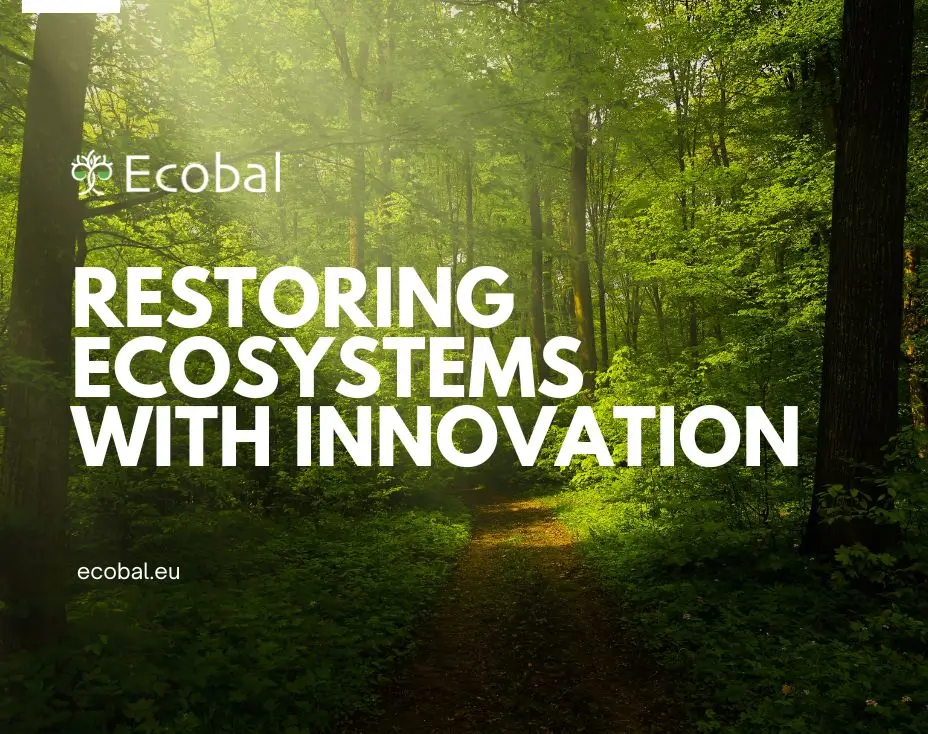Innovative Technologies in Ecosystem Restoration: Exploring Cutting-Edge Solutions for Biodiversity and Carbon Sequestration
Ecosystem degradation is a pressing global issue, with over 75% of the Earth’s land area already significantly altered by human activities (IPBES, 2019). This degradation not only threatens biodiversity but also exacerbates climate change by reducing the capacity of ecosystems to sequester carbon.
Innovative technologies, such as ultra-fast CO₂ hydrate formation, bioengineering, and advanced remote sensing, are emerging as transformative tools to restore degraded landscapes, enhance biodiversity, and boost carbon sequestration. Traditional restoration methods, such as reforestation and soil amendment, have limitations in scalability, cost, and effectiveness, particularly in severely degraded ecosystems.
For instance, reforestation efforts often face challenges like poor soil quality, water scarcity, and slow growth rates, which hinder their ability to sequester carbon at the pace required to mitigate climate change. According to the IPCC (2021), natural climate solutions, including ecosystem restoration, could provide up to 37% of the CO2 mitigation needed by 2030 to meet the Paris Agreement targets. However, achieving this potential requires innovative approaches that go beyond conventional methods.

Ultra-Fast CO₂ Hydrate Formation: A Game-Changer for Carbon Sequestration
One of the most promising technologies is ultra-fast CO₂ hydrate formation, which involves converting carbon dioxide into stable hydrates under specific temperature and pressure conditions. CO₂ hydrates are crystalline compounds where CO₂ molecules are trapped within a lattice of water molecules. This process can be accelerated using catalysts or specialized reactors, enabling rapid carbon capture and storage.
Studies estimate that CO₂ hydrates could store approximately 200 gigatons of CO₂ per year, with the potential to sequester up to 1,000 gigatons globally—equivalent to over 25 years of current global emissions (Ojuekaiye, 2024).
Bioengineering and Synthetic Biology
Bioengineering and synthetic biology are also transforming ecosystem restoration. These technologies involve the design and application of biological systems to address environmental challenges. Genetically modified microbes can enhance soil fertility, degrade pollutants, and promote plant growth (Thapliyal et al., 2022).
Advanced Remote Sensing and AI for Monitoring and Management
Restoration efforts require precise monitoring to ensure success. Advanced remote sensing technologies, combined with artificial intelligence (AI), are enabling real-time tracking of ecosystem health and restoration progress. High-resolution satellite images can detect changes in vegetation cover, soil moisture, and carbon stocks with unprecedented accuracy. For example, the European Space Agency’s Sentinel-2 satellite provides data with a resolution of 10 meters, allowing for detailed monitoring of restoration projects (ESA, 2023).
Challenges and Future Directions
While these technologies hold immense promise, several challenges must be addressed:
- Cost and Scalability – Many cutting-edge technologies, such as CO₂ hydrate formation, are still in the experimental stage and require significant investment for large-scale deployment.
- Ethical and Regulatory Concerns – The use of genetically modified organisms (GMOs) in bioengineering raises ethical and regulatory questions that must be carefully navigated.
- Integration with Traditional Knowledge – Combining innovative technologies with indigenous and local knowledge can enhance their effectiveness and acceptance.
Why It Matters for Ecobal
At Ecobal, we are committed to staying at the forefront of technological advancements in CO₂ sequestration. By integrating cutting-edge technologies such as ultra-fast CO₂ hydrate formation, we enhance our efforts to transform former agricultural or barren lands into thriving ecosystems.
Ecobal has achieved significant milestones, including:
- Nature Spots in five EU countries – France, Italy, Poland, Spain, and Romania.
- Ecobal’s storage capacity – Managing 155 hectares of Nature Spots across the EU, storing 1,581 tons of CO₂, releasing 1,150 tons of oxygen per year, and conserving nature.
This ensures that our projects not only effectively sequester CO₂ but also contribute to sustainable biodiversity conservation.
Ecobal’s Mission
- Raise awareness and establish authority to certify ecological health and capacity of rural and natural landscapes.
- Monetize ecosystem services to demonstrate the economic value of nature.
- Use natural ecosystems as efficient carbon sinks for CH₄ and CO₂ sequestration and biodiversity conservation.
- Turning CO₂ and CH₄ from a challenge into a valuable and tradable commodity.
- Manage soil microbiota and fauna to improve soil health and ecosystem functionality.
- Restoring biodiversity through the reintroduction and conservation of native species.
Conclusion
Cutting-edge technologies—such as ultra-fast CO₂ hydrate formation, bioengineering, and advanced remote sensing—are transforming the field of ecosystem restoration. These innovations provide scalable, efficient, and adaptable solutions for rehabilitating degraded landscapes, enhancing biodiversity, and bolstering carbon sequestration.
By integrating these advanced tools with traditional restoration practices and addressing existing challenges, their full potential can be harnessed to mitigate climate change and advance sustainable development.
About the Author
This article was written by Dr. Amisalu Milkias, a specialist in ecosystem restoration and carbon sequestration at Ecobal. With expertise in environmental science, sustainability, and technological innovation, Dr. Milkias is dedicated to advancing solutions that enhance biodiversity, soil health, and ecosystem resilience.
Selected Sources
- Ojuekaiye, O. S. (2024). Carbon Dioxide Storage in Aquifers and Gas Hydrates. Open Access Library Journal, 11(4), 1-24.
- Thapliyal, G., et al. (2022). Engineering traits through CRISPR/cas genome editing in woody species to improve forest diversity and yield. Critical Reviews in Biotechnology, 43(6), 884–903.


